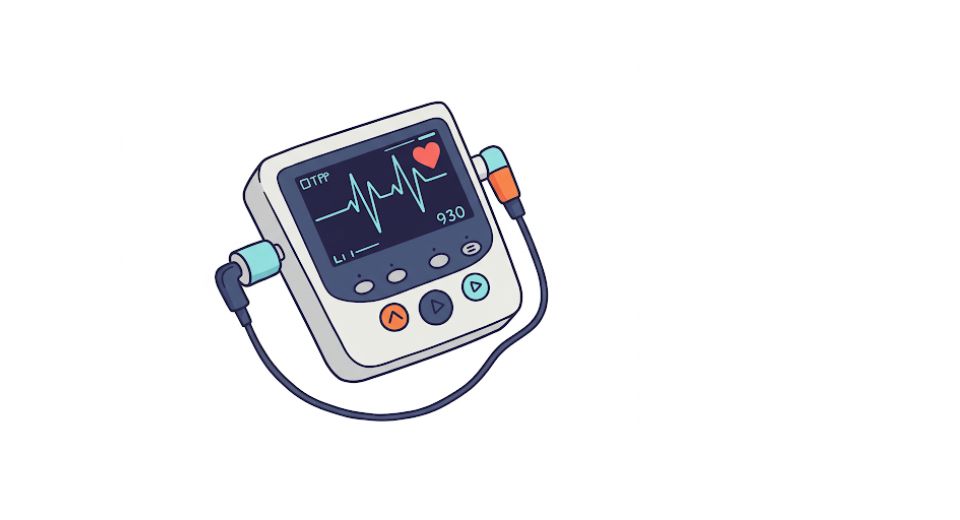
Apr 24, 2025

As divulged by Metastat Insight, the Global Holter ECG Market study focuses on a sector undergoing a substantial transformation in technological advancement and incorporation into healthcare. This market is now gaining significant traction as medical practitioners increasingly resort to portable electrocardiogram monitoring devices that yield accurate and, more often than not, continuous cardiac data, even beyond traditional clinical evaluations. A previously niche technology is therefore now part of a general conversation on health care due to the much greater awareness of cardiac health issues and the urgent call for early diagnostic modalities that maximize better patient outcomes without requiring hospital admission.
Global Holter ECG market is estimated to reach $498,904.42 million in 2025 with a CAGR of 6.2% from 2025 to 2032.
Historically, heart-related ailments were monitored solely via stationary equipment found within clinics and hospitals. In contrast, such tracking can now be managed via wearable cardiac monitors, which lightweight devices provide continuous monitoring of the patient's heart rhythm. This may take up to 48 hours or more, usually under real-world conditions, therefore making it easier to detect periods of irregularities that may not occur within the course of a regular evaluation. As health professionals continue to emphasize preventive health measures, this extended monitoring of the heart allows for much more accurate treatment planning. These devices will not only help patients in ensuring more comfort and mobility but will also lessen the burden on hospital infrastructure by enabling them to register observations from outside the confines of the hospital.
Such advanced technologies are being steadily incorporated into day-to-day cardiac diagnostic practice in many regions across North America and parts of Europe. In addition, the market continues to expand its footprint within parts of Asia-Pacific and some parts of Latin America. New economies across the world are now showing increased investment into digital health infrastructure and remote monitoring solutions, seeking to make their healthcare systems more sophisticated with better diagnostic tools. The adoption rate may not be the same across the board. The interest remains constant, though. The initial pilot projects on remote cardiac diagnostics have kicked off in urban institutions. Extending such initiatives to include more PPPs sounds quite plausible.
Another aspect to note is the transition in data processing and interpretation. Holters may have been in use for several decades, but the method of data acquisition and evaluation has undergone drastic changes, thanks to advanced analytics, usually powered by machine-learning models, which help healthcare professionals differentiate abnormal cardiac patterns from normal ones. Such a shift in data interpretation improves clinical decision-making as insights become timely and specifically related to that patient history.
More so, it can be said that it is a role in patient engagement that has not to be ignored. Indeed, people have more accessibility to their health information now than in previous times. The potential of apps and platforms allowing patients to view summaries of their heart activity is growing in its capacity to inform an enhanced relationship between doctor and patient. Transparency tends to breed a sense in the patient where he feels a part of the learning and treatment journey fully empowered and aware, especially important in chronic conditions such as arrhythmia or atrial fibrillation.
From the supply chain perspective, recent changes also happen in the manufacture and distribution of Holter ECG units. New participants in the field have brought competition that spurs innovations and drives down costs. Features such as wireless transmission, batteries with longer life, and synchronization with cloud-based storage systems are priorities among manufacturers, thus providing a seamless experience to both end-users and medical teams managing an array of data from different groups of patients.
There are still challenges that Contri to play. Increasingly, data privacy and compliance issues persist as markets become further digitized. There is now the added tension between maintaining patient confidentiality and leveraging the benefits of remote diagnostics. Standardization of protocols between various health systems is not yet complete and continues to be discussed, especially in multi-country deployments where practices and guidelines differ.
The evidence is that this attention to continuous cardiac care through wearables is not a passing novelty, but is becoming the norm in modern medical practice. All health systems around the world have gradually headed towards most early intervention, low-cost monitoring, and patient-centered care models. The research that was carried out by Metastat Insight very much reflects these movements and takes note of the details of a market that is becoming more and more relevant to the wider healthcare discussion.
The overview provided by Metastat Insight is, hence, a strong base to be built for grasping the current pathway of Global Holter ECG Market. Rapid technological advances, increased global awareness, and changing clinical preferences will mean that this segment will have a significant share in the future growth of diagnostic healthcare. While looking for smarter, less invasive ways to manage heartbeat conditions, both providers and patients will further the ideals of Holter ECG technologies, further testaments to priorities evolving within modern medicine.
Drop us an email at:
Call us on:
+1 214 613 5758
+91 73850 57479